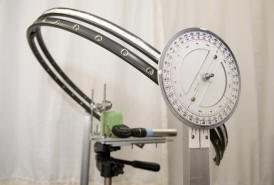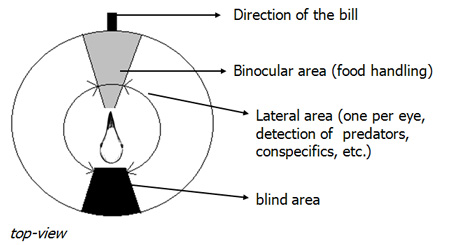|
We use
different methods to characterize the visual systems of
birds. For instance, we use a ophthalmoscopic technique
to measure the visual fields.

This is
basically an eye exam similar to the one the optometrist
(eye doctor) performs on humans. We use a visual field
apparatus and placed a bird at the center of it. Then,
we measure the extent of the visual field of each eye
with an ophthalmoscope at different elevations around
its head. The area in which the visual fields of both
eyes overlap is called the binocular field; the areas
without overlap (one from each eye) are known as the
lateral fields; and the blind spot behind its head is
called the blind area. With this information we can
build a schematic representation of the visual in two
dimensions (a top view around the bird’s head at the
level of the beak) or three dimensions (a sphere around
the bird’s head).

Previous:
What we do in our lab Next:
How birds eat?
|